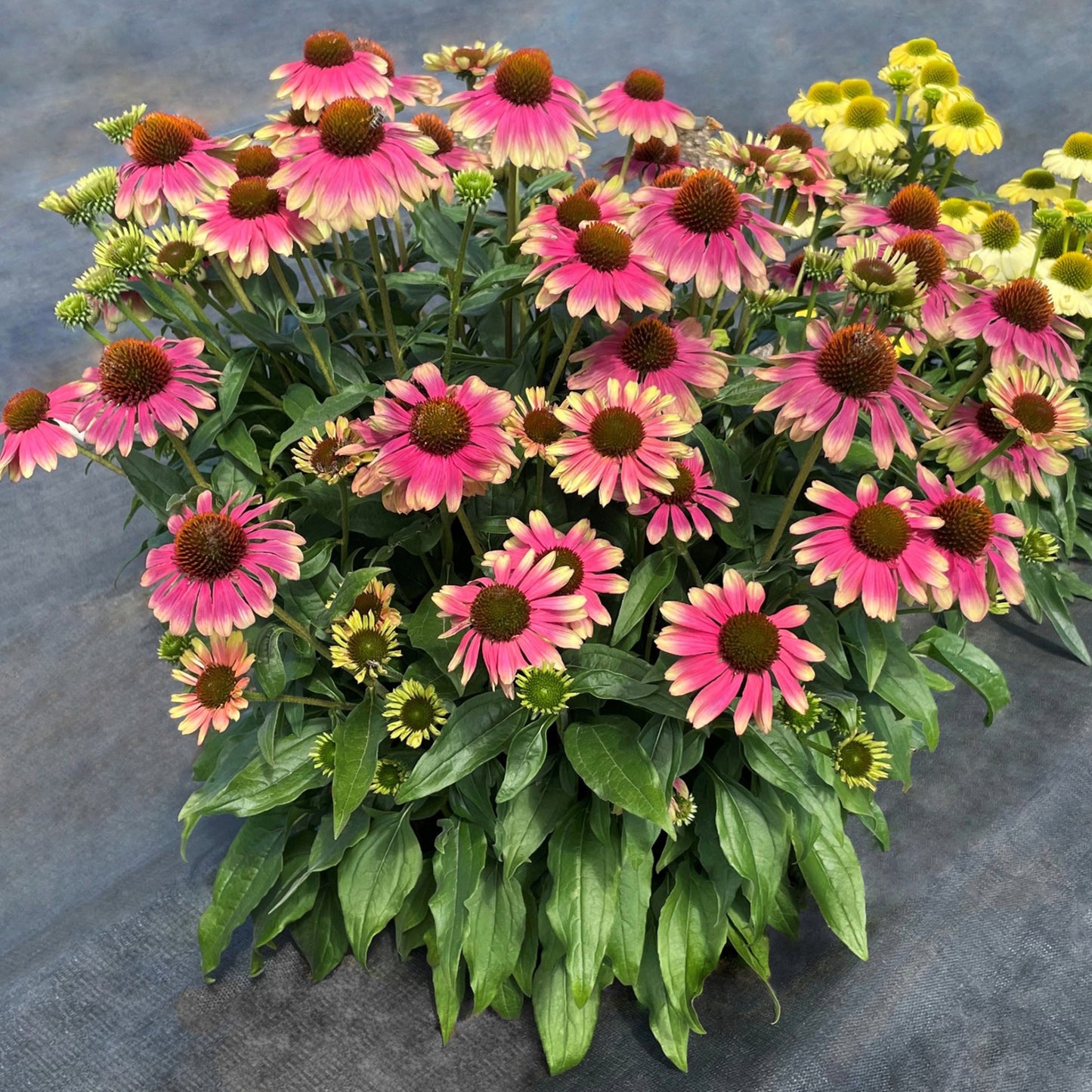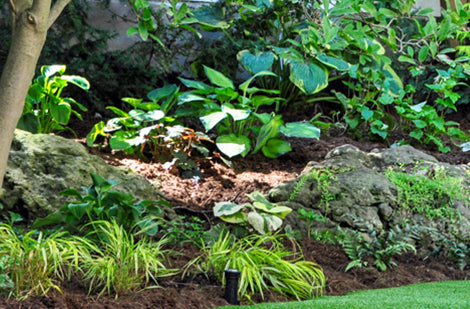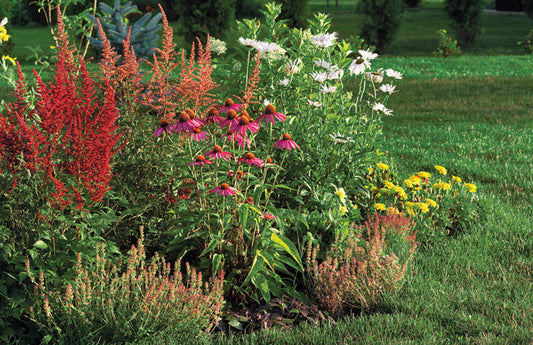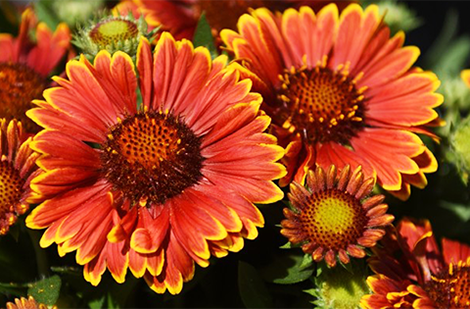Echinacea purpurea 'Pink Lemonade'
Echinacea purpurea 'Pink Lemonade' - Kismet® 'Pink Lemonade' Coneflower
Echinacea purpurea 'Pink Lemonade' - Kismet® 'Pink Lemonade' Coneflower
Exposure
- Sun
Rusticity
Bloom time
- June
- July
- August
- September
- Unique 'Pink Lemonade' colours
- Extended bloom time
- Attracts butterflies and bees
- Very cold hardy
- Great for cut flowers
Add a refreshing, long-lasting splash of colour to your garden with Echinacea KISMET® 'Pink Lemonade'! This exceptional variety will charm you with its unique "pink lemonade" hued flowers: vibrant pink petals that beautifully blend into a creamy yellow towards the cone. Robust and free-flowering, it will illuminate your garden beds all summer, attracting butterflies and bees for a lively spectacle.
Characteristics
- Foliage: Lance-shaped, dark green leaves with a slightly rough texture, forming a dense basal clump. Foliage is deciduous (disappears in winter).
- Flowering: Large, daisy-like flowers with a prominent central cone. The outer petals are vibrant pink and gradually transition to a creamy yellow or pale lemon towards the center, creating a distinctive "pink lemonade" effect.
- Light Requirements: Needs full sun (6+ hours per day) for abundant flowering and healthy growth.
- Habit: Forms an upright and compact clump.
- Growth: Moderate growth rate. Reaches a mature size of approximately 45 to 60 cm (18 to 24 inches) in height and width.
- Humidity: Tolerates average ambient humidity.
- Soil: Adaptable to most average garden soils, provided they are well-drained. Prefers lean to moderately fertile soil.
- Temperature: Very cold hardy. Tolerates winter cold well.
- Watering: Moderate watering. Once established, the plant is drought tolerant. Ensure good drainage to prevent root issues.
- Resistances: Generally resistant to diseases and pests. May be susceptible to powdery mildew in very humid conditions or with poor air circulation. Drought resistant.
Usage
- Types of Use: Excellent for mass plantings, borders, pollinator gardens, cottage gardens, and containers. Its flowers are very suitable as cut flowers for bouquets.
- Decorative Benefits: Its unique colour palette brings a cheerful and bright touch to any landscape. The flowers attract butterflies and bees, adding animation to the garden. Dry seed heads provide winter interest and food for birds.
Maintenance
- Fertilization: Generally little to no fertilization is necessary in average soil. A spring compost application may be sufficient.
- Pruning: Deadhead spent flowers to encourage new blooms and extend the display. Leave some seed heads in place in the fall for birds and winter interest. Prune dead foliage in spring.
- Planting:
- Spacing: Approximately 45 to 60 cm (18 to 24 inches) apart to allow for good air circulation and optimal development.
- Depth: Plant at the same depth as it was in its container.
- Period: Spring or early fall are the best times for planting.
Plant details
Dimensions
Dimensions
Characteristics
Characteristics
Habit:
- Upright
- Bushy
Flowering colours:
- Pink
- Yellow
Plant needs
Plant needs
Watering:
- Tolerates dry, well-drained soil
- Tolerates moist soil
Maintenance:
- Easy
- Deadhead (spent flowers)
Soil requirement:
Features
Features
Resistance:
- Heat
- Cold
- Dryness
Attract:
- Pollinators
- Butterflies
- Bees
- Birds
Use:
- Border
- Flowerbed
- Thriller plant
- Rock garden
Attribute:
- Moderate Growth
- Cut Flower
- Long Bloom
- Non-Toxic to Cats
- Non-Toxic to Dogs



Related articles
-

Perennials for all occasions
Read the articleOsez créer des associations inédites qui sauront refléter votre personnalité, même si pour cela vous deviez déplacer certaines vivaces pour mieux les mettre en valeur.
-

Landscaping with perennials
Read the articleVariétés à découvrir, la tomate se savoure crue, en sandwich, en bruschetta ou en salade. Cuite, c'est l'ingrédient de base de sauces, soupes et salsas.
-

Perennials proper maintenance: cut and fertilize
Read the articleLa grande popularité des vivaces vient du fait qu'après avoir été oubliées pendant des mois au cours de l'hiver, elles réapparaissent sur la scène plus énergiques et surprenantes que par...
-

How to plant perennials in your garden
Read the articleEn pénétrant au jardin, ce sont souvent les plantes vivaces que l’on remarque en premier. Un massif de sauges, d’hémérocalles, d’astilbes, d’échinacées ou de lavande offre un spectacle d’une beauté...











